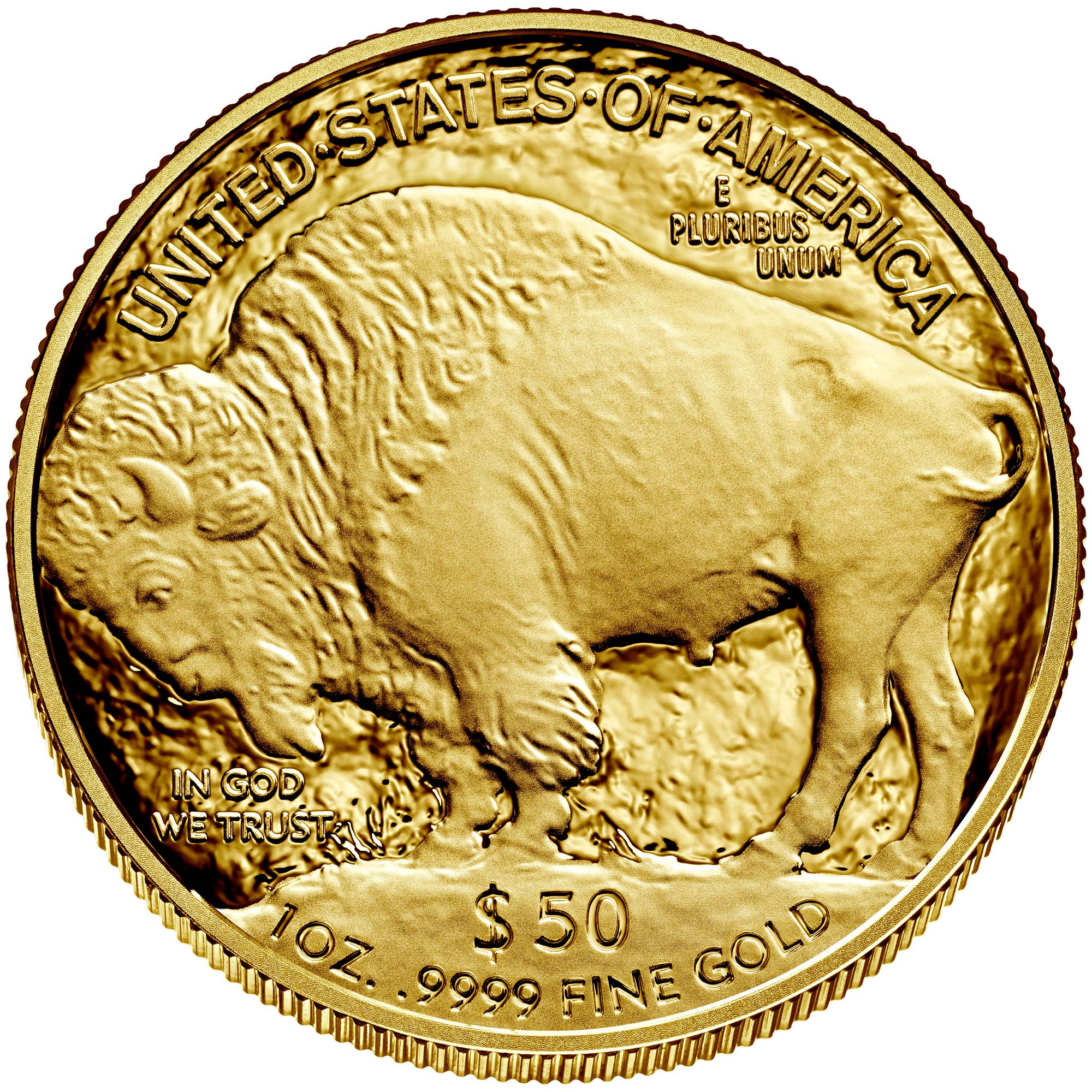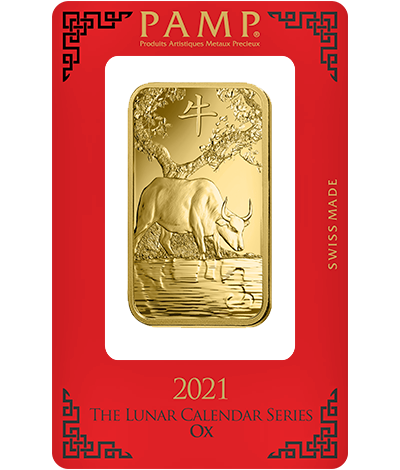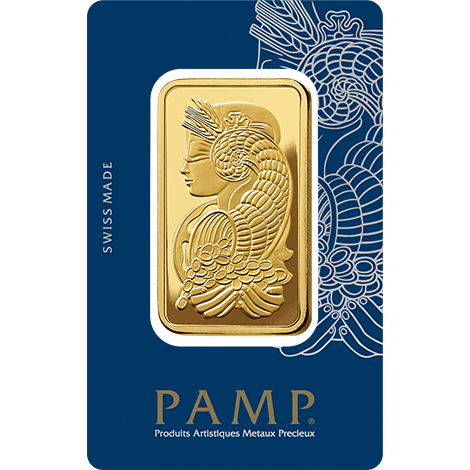Introduction
We believe that understanding the type of available Gold products in the market is the first step to Gold investment. Gold products such as mutual funds, Gold mining stocks, and (ETFs) Exchange Traded Funds are indirect Gold investment products. The article does not discuss the above Gold products because they represent an indirect form of Gold investment.
Gold Bullion
The traditional form of Gold ownership comes in the form of Gold Bullion (Gold Bars). Here are some examples that you might see of Gold bullion: -
Each Gold bar you see in the above images has several pieces of information stamped on the bar. The first being the refiner brand, PAMP, followed by the weight, purity, and serial number. Every bar that refined comes with a certification that holds the above information.
What are the advantages & disadvantages of Gold Bullion Ownership?
Let's take a look at some of the benefits: -
A) High Liquidity: - Gold Bullion is highly liquid (easily converted into cash) because many parties are willing to take the other side of the trade. Well-established Gold Refiners (Brands) such as PAMP, METALOR, and PERTH MINT are much easier to liquidate anywhere in the world due to their recognition and acceptability.
B) Lower Cost than Gold coins: - The 'Premium' (Cost of Transportation, Storage) is much lower for Gold Bullion as compared to Gold Coins. Several factors may attribute to the lower cost, such as bulk orders and supply chain efficiency.
Several Disadvantages of Gold Bullion Ownership include: -
A) Risk of Theft: - There is an element of theft involved with Gold ownership. The high commodity value of the product makes it a highly demanded target for thieves.
B) Zero Interest or Dividend: - Gold does not yield interest or dividend similar to a stock's performance. A simple rudimentary understanding of factors affecting Gold performance is demand and supply of the commodity. Stocks, on the other hand, are influenced by the company's performance.
Gold Coins
Gold Coins are another type of Gold ownership. Sovereign governments or refineries usually mint gold coins. Some of the popular coins you see are Canadian Maple Leaf, Australia Kangaroo, China Panda Coin, American Buffalo, and others. They are indicated in the images below: -


What are the advantages & disadvantages of Gold Coins Ownership?
Let's take a look at some of the benefits: -
A) Size of Minted Coins: - The Gold Coins are usually minted in denominations of 1 ounce or below, making them easily affordable and convenient to invest in compared to Gold Bars.
B) Rarity: - Older Gold coins (minted/produced in a particular year) have what is known as "Numismatic Value" or "Collector's Value". The numismatic coins command a higher value than would be significantly more than the underlying gold value. A classic example is the Saint Gaudens Double Eagle (1907) 1-ounce numismatic coin sold for 7.6 Million USD.
C) Easy Storage & Highly Liquid: - The coins come in a sealed packaging that enables the investor to store them easily. The sizes of these coins make transportation as simple as carrying it in your wallet or pocket. Gold coins are highly liquid similar to Gold bullion as it is a commodity in high demand. The value of Gold coins is usually based on the underlying Gold value unless an aspect of rarity comes into play.
Several Disadvantages of Gold Bullion Ownership include: -
A) Large Markups: - Gold coin dealers tend to markup the prices of these coins significantly. Investors that have purchased Gold coins will need an extended period to achieve potential profit.
B) Zero Interest or Dividend: - Gold does not yield interest or dividend similar to a stock's performance. A simple rudimentary understanding of factors affecting Gold performance is demand and supply of the commodity. Stocks, on the other hand, are influenced by the company's performance.
Gold Jewellery
I believe many of you will recognise this Gold Product, some more than others. One of the most treasured and recognised forms of Gold is Gold Jewellery. Did you know that most global gold production of up to 49% is for jewellery?
What are the advantages & disadvantages of Gold Jewellery Ownership?
Let's take a look at some of the benefits: -
A) Easy Accessibility: - Gold jewellery can be found anywhere these days, especially with the rise of e-commerce and better internet coverage. A variety of designs are available both in-store and online at competitive prices. Companies such as Cartier, Pandora, Channel and many others are at the forefront of jewellery making with intricate designs.
B) Wearable: - Gold jewellery is unlike Gold coins or bullion that you invest in and store. Jewellery can be worn daily.
Several Disadvantages of Gold Bullion Ownership include: -
A) Low Liquidity: - Gold jewellery has low liquidity implying that it is challenging to exchange for money. Pawnshops, jewellery retailers and scrap dealers may buy the Gold at a lower price because of the time and effort required to refine it into Gold.
B) High Risk of Theft: - Similar to Gold bullion ownership, an element of theft is more significant, especially if jewellery is worn daily.
Gold Investment Accounts (GIA)
Definition: GIA is a form of Gold Investment Product offered by Banks such as Maybank, CIMB, UOB and Public Bank. GIA's enable investors to invest in Gold without physically storing the asset (Ownership of Paper Gold).
What are the advantages & disadvantages of GIA Ownership?
Let's take a look at some of the benefits: -
A) Investment of Pure Gold: - The purity of Gold that banks offer investors are 999 or 99.99% pure. 999 Gold allows investors to invest strictly in the metal value without additional costs such as storage fees.
B) Easy Accessibility: - Investors can make trades via the bank's website or mobile application, providing convenience. The prices altered daily unless the market unexpectedly changes.
C) Zero Risk of Theft: - Investors are not exposed to the theft of their Gold as there is no physical ownership.
D) High Liquidity: - GIA providers guarantee both the buying and selling of Gold. Investors will not need to hunt for a buyer and bargain prices.
Several Disadvantages of Gold Bullion Ownership include: -
A) Uninsured: - GIA is uninsured by PIDM (Perbandanan Insurance Deposit Malaysia). There is no coverage for losses of Gold in GIA.
B) Conversion Fees: - The bank imposes no conversion fees to trade Gold. The only costs involved are the market forces and bank margins.
C) Service Fees: - Several banks such as UOB impose a service for maintaining a GIA. There are nominal fees charged on account balances that fall below the required threshold
Keen on learning more on PAMP products or Numismatic coins?
Click here to visit PAMP
Click here to visit the American Numismatic Association
Weekly Gold Investment Series Guide
Checkout our blog weekly or subscribe to our newsletter for the latest Gold Investment Guides





[…] they key components that affect the Gold price are. If you have not read my previous article on "A Guide to Gold Investment", I would suggest reading through to understand the available Gold products in the […]
[…] Viewers that have missed and would like to review previous articles can click the link to read "A Guide to Gold Investment" or "A Short Guide to Gold […]
[…] A Guide to Gold Investment Part 1 […]